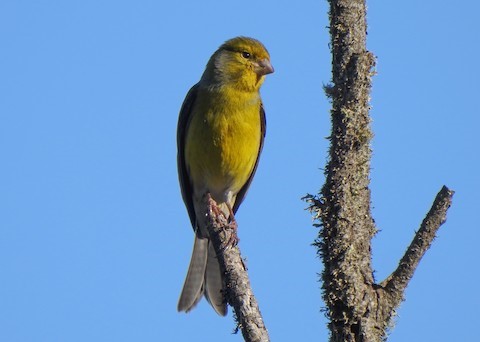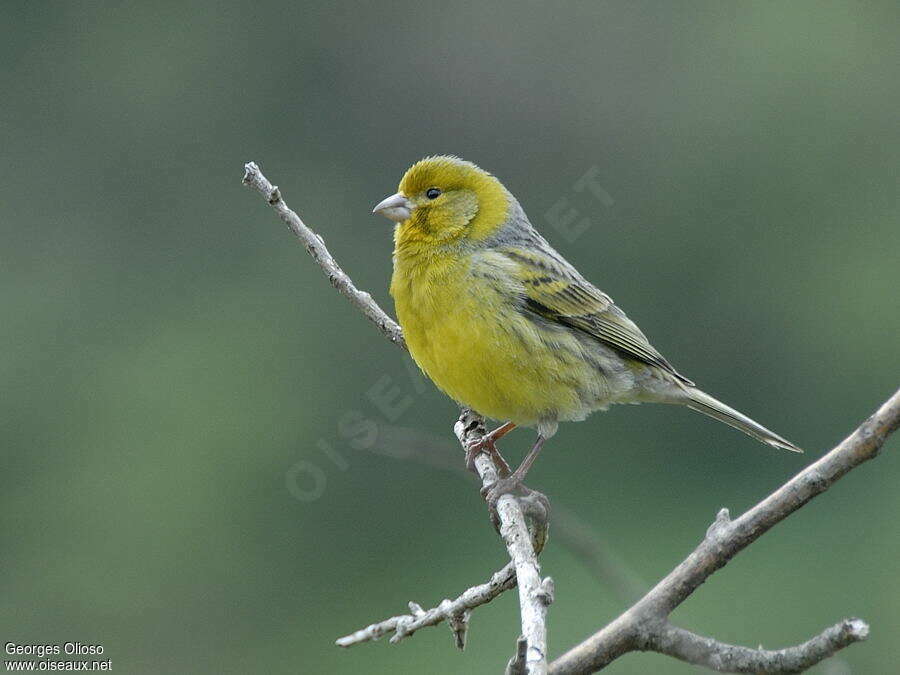

It is found at least 760 meters above sea level in Madera, 1,100 meters in the Azores and 1,500 meters above the Canary Islands. This often happens in man-made habitats such as parks and parks. It is most commonly seen in the semiopen region with small trees like orchards and shrubs. It can be seen in various habitats, from pine and laurel forests to sand dunes. The population is estimated at 5,3,4,8 pairs in the Canary Islands, 5,4 pairs in the Azores, and 5,3,4 pairs in Madeira. In the Azores, it is common on all islands. It is prevalent in Madeira, including Porto Santo and the Desert Islands and recorded on Salvage Island. In the Canary Islands it is common in Tenerife, La Gomera, La Palma and El Hierro, but more local in Gran Canaria and rare in Lanzarote and Fuerteventura, where it has recently begun breeding. It is a local disease of the Canary Islands, the Azores and the Madeira in the region known as Macaronsia in the East Atlantic Ocean. The song is a silver tweeting similar to the lyrics of Serene and Citrill Finch. It is about 10% larger, has a longer and lower contrast than the comparatively European serine, and has more gray and brown on the feathers and relatively less wings. The juvenile birds are mostly brown to brownish brown. The female is similar to the male but duller with gray heads and breasts and less yellowish-colored unders. The upper parts are dark gray-green and the pump is pale yellow. The lower abdomen and tail-veils are white in the bottom and a few dark lines on the sides. Most of the males have yellow-green heads and have an under-part with salivary forehead, face and supersilium. The width of the Wild Atlantic Canary can be 10 to 12 cm (3.9 to 4.7 inches), 21 to 23.7 cm (8.3 to 9.3 inches) and with a weight of 8.4 to 24.3 grams (0.30 to 0.86 oz), on average about 15 grams (0.53 oz). This Atlantic Canary is a natural symbol of the Canary Islands and is associated with the date palms of the Canary Islands. The species is common in captivity and several varieties have been developed. The wild birds are yellowish-green for the most part and have a brownish color on the back. It is native to the Canary Islands, the Azores and Madeira. Lowest pricing is based on our 3rd party pricing supplier and valid as of June 26th, 2023.The Atlantic Canary ( Serinus Canaria), also known as the only wild canary in the world and the island is also known as Canary, or Common Canary, is a small passerine bird of the genus Serinus in the Finchliad family. Listed prices may have blackout dates, qualifications or restrictions.Ĭruise Critic is not responsible for content on external web sites. In addition, average cruise prices are updated nightly.įurthermore, Cruise Critic makes no guarantees for availability of prices advertised on our site. Department of Transportation.įor any cruises listed, Cruise Critic does not guarantee any specific rates or prices.
ATLANTIC CANARY FULL
When you book with one of our partners, please be sure to check their site for a full disclosure of all applicable fees as required by the U.S.


Rates are in USD and valid for US and Canadian residents only. Taxes, fees and port expenses not included. Our partners who list cruise pricing on Cruise Critic are required to provide prices for cruise only or cruise packages, per person, double occupancy, and are based on specific cabin types and sailing dates, and may not be available for all cabin types/sailings. Cruise Critic is not a booking agent and does not charge any service fees to users of our site.


 0 kommentar(er)
0 kommentar(er)
